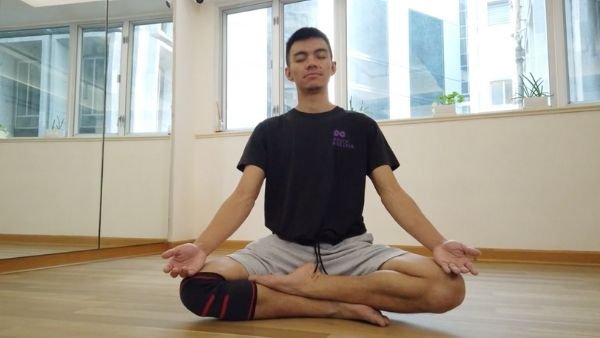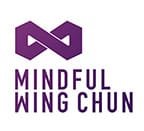What are the health benefits of Wing Chun?
Chinese Kung Fu has been around for over 2,500 years, and remains one of the superior systems that have promoted health over the centuries. Most of the traditional Chinese Kung Fu systems such as Wing Chun are based on cultivating energy through mental focus and deep physical relaxation. Recent medical research has found that regular practice of Internal Kung Fu, such as Wing Chun or Tai Chi, enhances immune function, lowers the blood pressure and produces a host of other medically valuable physiological changes. It also improves balance and posture; through relaxation and mind-body co-operation, one can rebalance and bring forth correct alignment in the spine and the rest of the body. If left untreated, postural imbalances can dramatically reduce flexibility, restrict physical movement and decrease quality of life. That’s why the uses of Chinese Kung Fu have been prescribed by Chinese traditions for overall internal and external health.


The Mindful Wing Chun system, as passed down by the late Grandmaster Chu Shong Tin, put great emphasis on mental calm, balance, correct posture and mindful relaxation. Relaxation plays an important role in our health. In asthmatics, for example, relaxation training has been found to widen restricted respiratory passages. Some diabetics, relaxation can reduce the need for insulin. In many patients with chronic, unbearable pain, the training has brought about significant relief. Through Western scientific research, we now know that anxiety and an inability to deal with stress have a damaging effect on the mind and body, and it’s a proven fact that rapidly progressing ill health often goes hand-in-hand with not being able to relax. Moreover, research shows that relaxation may help ward off disease by making people less susceptible to viruses, and by lowering blood pressure and cholesterol levels.
The medical advantages come not from ordinary relaxing activities such as catnaps or gardening, but rather from “deep relaxation” obtained from intensive techniques that allow people to evoke a specific physiological state. “Just sitting quietly or, say, watching television, is not enough to produce the physiological changes; you need to use a relaxation technique that will break the train of everyday thought, and decrease the activity of the sympathetic nervous system,” says Herbert Benson, director of the Division of Behavioral Medicine at Beth Israel Hospital, part of Harvard Medical School in Boston.
Before we continue, here’s a video about mindful relaxation in which Nima King discusses the physiological differences between normal and mindful relaxation:
Health Benefits – Chi / Nim Lik
From deep relaxation, one can promote deep natural breathing and improved blood circulation, and also bring forth the flow of Chi (life energy, or, as our teacher, Grandmaster Chu Shong called it, “Nim Lik”) in the body. If practised correctly, some of the internal arts (e.g., Wing Chun, Tai Chi and Yoga) can provide relief to sick or physically weak people without them needing to rely on drugs, medicine or surgery. These arts are designed to build up the practitioners’ immune system and bodily awareness and improve the physiological functioning. They co-ordinate the natural movement of the body with the mind and unblock and release the flow of Chi within the body.
Chi / Nim Lik is the circulating life energy that in Chinese philosophy is thought to be inherent in all living things. The study of Chinese medicine shows that some illnesses occur when the flow of Chi is impaired. To treat these illnesses, the “life energy” or Chi must be made to flow in a natural way within the body. Our teacher, Grandmaster Chu Shong Tin, had attained such a high level of control of this life energy that it could be tangibly felt and experienced by others.
Check out this video of him demonstrating the use of Chi:
But let’s leave the topic of Chi aside for a moment and ask a very simple question: Why is it that we can’t just stay calm and relaxed throughout our daily lives? Let’s think about that: It’s our own body and mind, so when there’s excess tension in our bodies that leads to discomfort or pain, why can’t we control, release and open the body to rid ourselves of discomfort?
The main reason for this is lack of connection between our body and our mind. In our current culture and lifestyle, we’re always thinking. Our thoughts run wild, jumping uncontrollably from one subject to the next. To add to this, with the constant advancements in technology, we have a whole different world to live in: the cyber world, so we spend hours every day with our awareness inside the smart phone or tablet rather than on our own body.
Science On Chi / Nim Lik
Scientists call this frontal-lobe thinking. Through experiments on and observations of the brain and body, they’ve made astonishing findings when examining a person who is stressed due to unnecessary overthinking, compared to someone who is calm and in control of their mind (for example a seasoned meditator).
Thanks to these detailed studies, we now understand the unhealthy effects of excess frontal-lobe thinking. In other words, by overusing the prefrontal cortex at the front of the brain, which is used for thinking, stressing and calculating, we are not only out of touch with our body but are also causing it harm. They found that by being able to shut off the prefrontal cortex of the brain we are able to gain better access to the rear part of the brain, leading to ultimate human performance. They called it “ultimate human performance” because they saw that productivity, strength and overall performance increased by an astonishing 500%!
The remarkable findings were that the rear part of the brain is responsible for healing, creativity, relaxation, motor skills and much more. Furthermore, frontal-lobe thinking uses up 10 times more energy than the rear part, so when we shut that down and naturally activate the back part of the brain, a great deal of energy is saved, and it can then be used for repair and healing. Needless to say, this mindful state is a natural remedy for stress, which doctors now agree is the leading cause of many illnesses.
These new scientific findings are highly relevant and interesting because Grandmaster Chu Shong Tin, who had mind-boggling control over his body and mind, told us that his feeling was that he was using the back part of his brain to gain such incredible internal access to and control over his body. He often said he couldn’t explain how or why he was able to have such control, however the feedback from his mind was that there was not much thinking or analyzing in his movements.
Instead, he said, the feedback from his body was that he was feeling total and deep relaxation and had amazing control over his muscular and skeletal system. It’s appropriate to also mention at this point that as a child he was very frail and weak and would get ill regularly. He started practising Wing Chun when he was in his late teens. From the age of 22 until he passed away, the doctors told him on three separate occasions that he was going to die (from stomach problems to low white blood cell counts to cancer), yet he managed to teach until he passed away at the age of 82.
Check out the following video on this topic:
If practised correctly, this is truly the power of the internal art of Wing Chun! A group of neurologists have termed the deactivation of the prefrontal cortex “the flow state”, and at Mindful Wing Chun we call it “the Nim Tao State”. When in this state we gain the ability to activate the rear section of the brain and thus reap all the benefits and control that come with that.
Self-Defense and Nim State
In terms of self-defense, why is it not just a martial art like Karate, Judo or Kick Boxing, and why is it so much more powerful and efficient? Healthwise , why is it so different from going to the gym, going for a run or playing a sport? In terms of pain relief, how is it that we can literally manipulate and heal our body with our intention instead of going for a massage or seeing a chiropractor? In terms of stress relief, why is it much better than a temporary fix of watching TV or having a beer? And in terms of a lifestyle, how is it that Wing Chun enables us to feel happier, more confident and more in control?
These are all questions that we can answer better now through our own understanding and through scientific facts, but we now know that ultimately a person needs to experience these facts to truly understand them. Consider this: If you’d never tasted salt before and we spent hours trying to explain what it tastes like, then no matter how intelligent you were you’d never truly understand what we meant until you actually tasted the salt for yourself.
The genuine and internal style of Wing Chun is exactly the same. It’s not just a martial art and it’s not just a healthy hobby – once practised and understood correctly, it’s a system that will have a positive influence on so many levels of your life! The benefits of this art are very real and don’t take very long to experience, regardless of your gender, age or fitness level. That’s why Wing Chun can become very addictive for those who are exposed to it!
Here’s a summary of the benefits to be gained from prolonged and correct practice of Mindful Wing Chun:
- Deep relaxation
- Postural correction and proper body alignment
- Pain relief
- Stress relief
- Improved mental focus and concentration
- Holistic awareness of the body
- Improved health of the spine and nervous system
- Improved organ function
- Enhanced immune function and lower blood pressure
- Longevity
- Overall emotional balancing and health for the mind, body and spirit, leading to a happier life!




